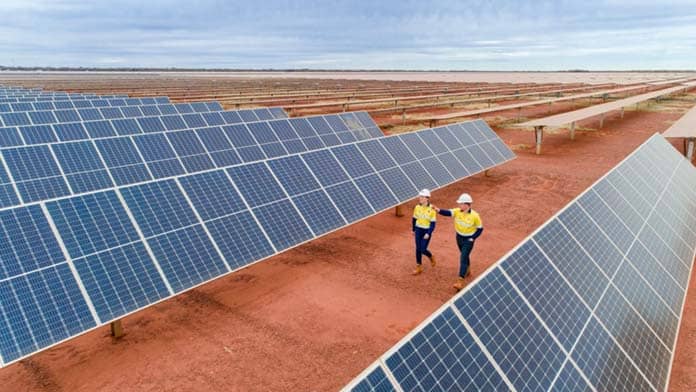The energy market chaos and soaring power bills boost the case for a rapid transition to renewable energy. Surging gas and coal prices are driving up the cost of power globally.
But the problems in Australia are also due to privatisation, and an energy system run according to the market. Private companies should never have been allowed to turn the power system in a playground for profiteering.
When the cost of power generation sky-rocketed in June, the Australian Energy Market Operator (AEMO) seized control, temporarily nationalising operations.
But just over a week later it handed back control to the power companies.
Despite the concerns about market manipulation to boost profits, AEMO didn’t exactly punish the private operators. Instead it will pay them $1.5 billion in compensation under market rules, adding about $70 onto every household’s power bill, according to the Nine newspapers.
Instead of the market delivering lower prices, it has brought profits for big companies at our expense.
Plan for renewables
A new official energy system plan from AEMO banks almost entirely on private sector development of renewable energy expanding to supply 83 per cent of our power needs by the end of the decade.
The closure of coal power plants will accelerate, it says, with 60 per cent of them offline by 2030. This means further coal plants closing on top of the closures before 2030 of Liddell and Eraring in NSW and Yallourn in Victoria which have already been announced.
AEMO is the official body in charge of managing the electricity system and has mapped out the investment and planning necessary to keep the lights on through to 2050. Its plan is based, AEMO chief executive Daniel Westerman says, on the agency’s discussions with the major companies in the energy industry and “a wide swathe of stakeholders and they are telling us this is the most likely scenario”.
Renewable energy with storage is now the cheapest form of power there is.
AEMO still anticipates that gas will play a back-up role at times. Predictably, the gas companies tried to claim vindication for their plans to increase mining.
But the capacity of gas power plants needed will drop from 11GW to 10GW. And the actual use of the plants will decline further, with gas use dropping by around 40 per cent by 2025.
There is simply no need to expand gas production for power generation—or to open new gas fields like the Pilliga Narrabri, Beetaloo Basin or Scarborough. Yet Labor has thrown their support behind them.
AEMO’s plan is based on minimising the cost of investment. Gas could be phased out even quicker through spending more on renewable storage, or if the cost of battery technologies drop further. It also thinks it’s possible the cost of green hydrogen could drop sufficiently to drive an even more rapid transition.
The plan takes into account only existing government policies, including Labor’s “Rewiring the nation” plan to allocate $20 billion to connect renewable energy to the grid. It is expecting private companies to build all the new wind and solar power needed.
The Labor government is firmly on board with its approach. Climate Change and Energy Minister Chris Bowen called the plan “a world-class document”.
But relying on big business means there are no guarantees that the increase to 83 per cent renewables by 2030 will happen. A liveable future can not be left to the whims of the market.
And business will do nothing to protect workers in coal dependent communities who face losing their jobs. With a rapid closure of coal power stations predicted within eight years, it is only government investment that can ensure new jobs are available where they’re needed, and provide decent pay and conditions.
AEMO’s figure of 83 per cent renewable energy by 2030 mirrors Labor’s own target, which was set using the previous version of AEMO’s System Plan. It needs to be raised further in order to go beyond Labor’s overall reduction target of 43 per cent across the whole economy, which is far below the 75 per cent recommended by the Climate Council. Emissions can be cut more easily from electricity than any other area.
Labor’s goals are based on a conservative approach to change determined by what’s profitable for big companies. Government planning and investment could speed up the transition and take us rapidly to 100 per cent renewable energy.
Publicly-owned power could also guarantee lower power prices and end corporate profiteering. AEMO rightly calls the changes coming over the next decade “a once-in-a-century transformation in the way electricity is generated and consumed”.
Labor’s support for big business and the free market is seeing it miss this opportunity to take power back under public control.
By James Supple






